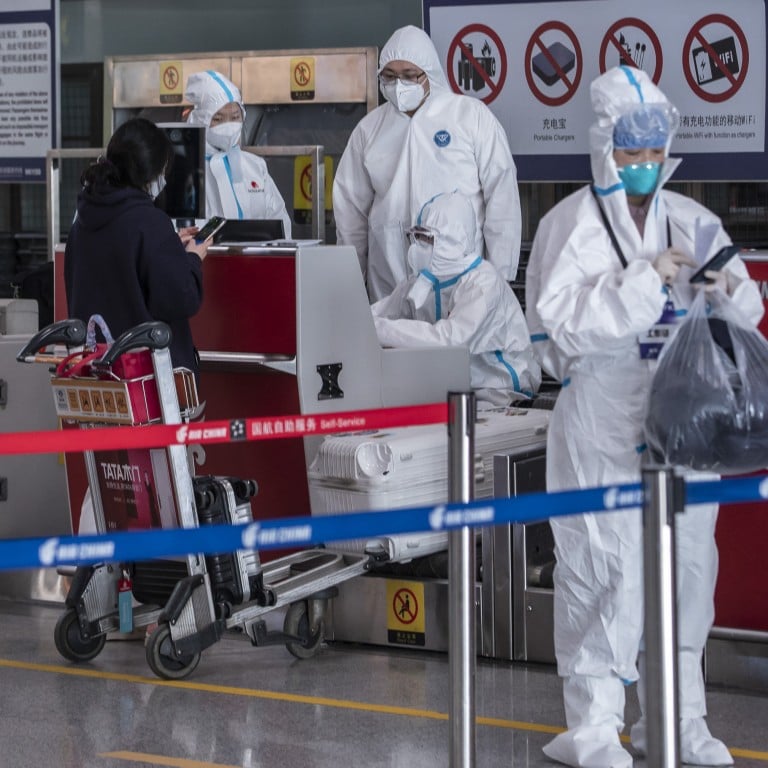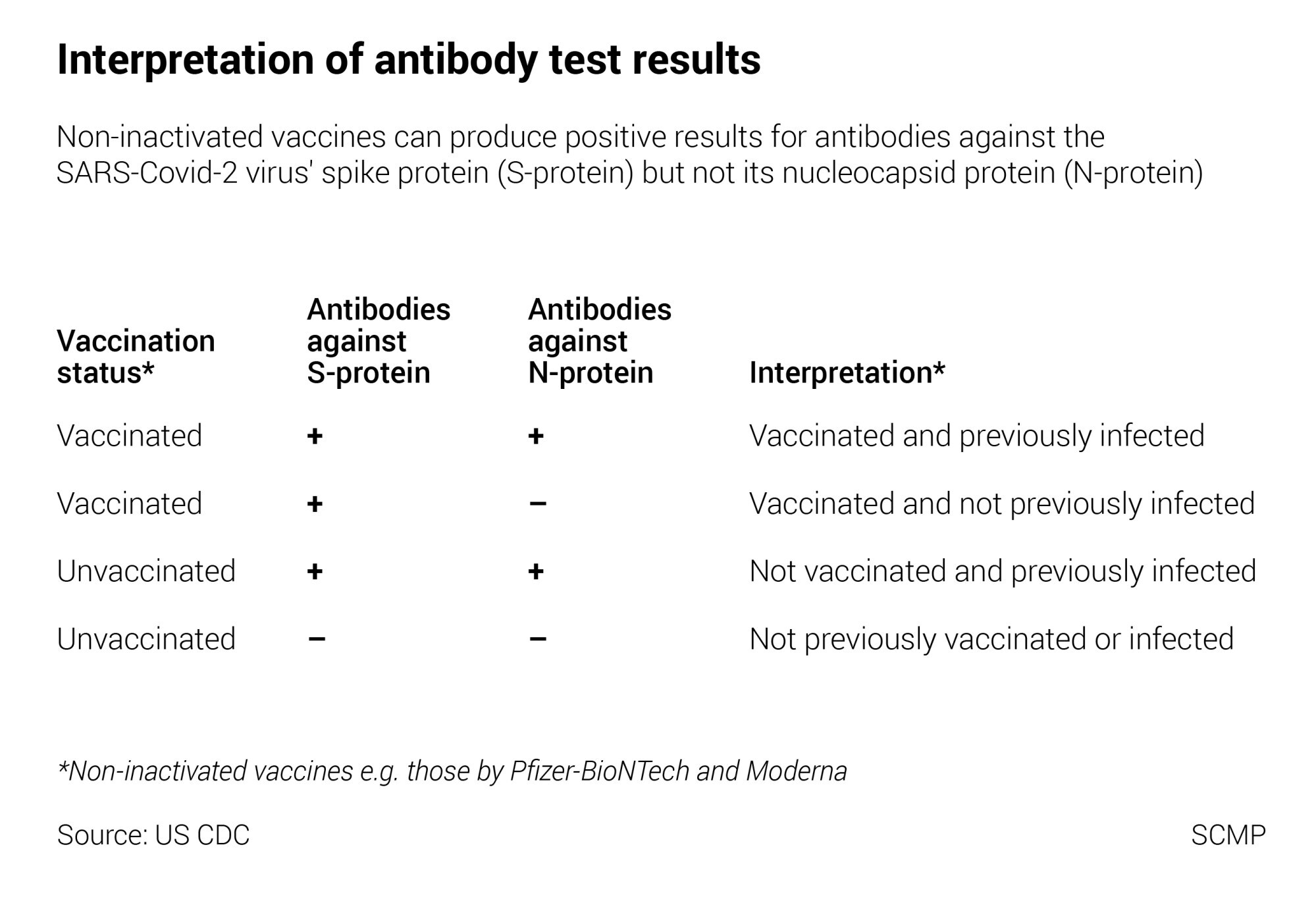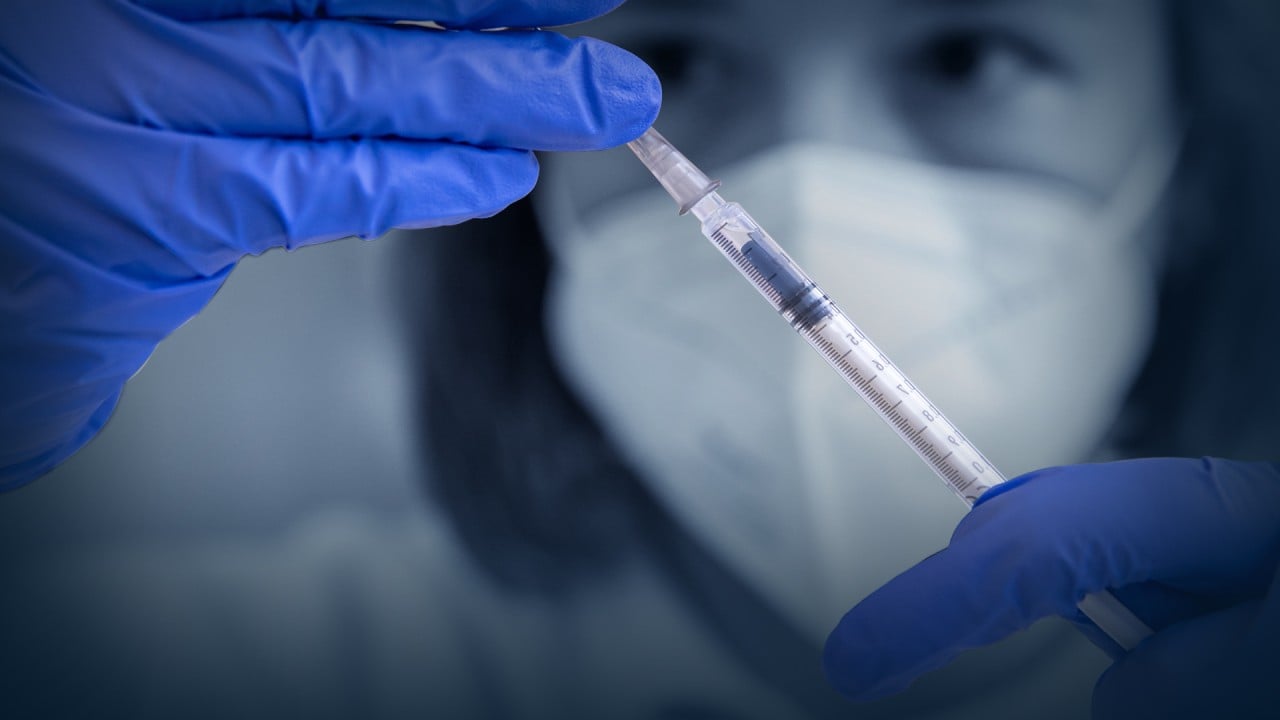
Explainer | Pandemic travel: tests for Covid-19, which ones China recognises, and are anal swabs necessary?
- Potential travellers to the mainland must apply for a health code but the requirements depend on where you’re coming from
- After arriving in China, expect multiple swabs for RT-PCR tests at the airport, during quarantine and in any additional health monitoring period
With various tests now being used by authorities for different purposes, you may be forgiven for not being able to distinguish between them. Here’s a guide.
What types of Covid-19 tests are there?
There are two main types of tests: diagnostic tests to detect whether you are currently infected by the virus, and antibody tests to detect whether your immune system has produced antibodies from either a previous infection or vaccination for the virus.
Diagnostic tests usually take samples from nose or throat swabs. These are the most common:
-
Reverse transcription polymerase chain reaction (RT-PCR) test: samples are tested for viral genetic material in a laboratory, the most accurate way to diagnose the disease so far, according to the World Health Organization. But lab testing is expensive and requires trained personnel. Results usually take between one day and a few days.
-
Antigen tests, or rapid diagnostic tests: these tests, which detect specific proteins on the surface of the coronavirus, can be done anywhere. (Singapore has distributed them to its population for home testing, for instance). Because samples do not need to be sent to a lab, they are cheaper and more convenient, and results are available as quickly as 15 minutes. However, they are generally less accurate than RT-PCR tests.
Antibody tests, also known as serology tests, detect proteins your immune system produces after a coronavirus infection or vaccination. These use blood samples, and there are a few variations:
-
Immunoglobulin M (IgM) tests: IgM is usually the first type of antibody produced against virus infection, and may indicate a recent infection or vaccination. Tests may detect IgM antibodies produced in reaction to either or both of two different proteins associated with the coronavirus: 1) spike protein (S-protein) and 2) nucleocapsid (N-protein).
-
Immunoglobulin G (IgG) tests: The level of IgM wanes over time and is later replaced by other types of antibodies such as IgG, which may stay in the blood for months and possibly years, according to the US Centres for Disease Control and Prevention (CDC). Hong Kong and mainland China use it to determine if travellers had past infections or vaccinations.
What tests do I need before travelling to China?
China requires potential travellers to apply for a health code showing they have had the necessary tests and been granted approval to enter China.
The requirements for the health code may vary depending on where you’re flying from, so consult the nearest Chinese embassy or consulate for detailed instructions as well as the list of recognised test providers.
If you fly to China from the United States, you generally need negative RT-PCR and S-protein IgM antibody test results, according to the Chinese embassy in the US.

Most Chinese vaccines, such as Sinovac or Sinopharm, are inactivated vaccines. There is no way to distinguish a positive antibody test due to these vaccinations from those from a past infection, but passengers can upload proof of vaccination to support their application to travel.
The requirements are similar for those entering from Singapore. If you are vaccinated with a non-inactivated vaccine, you need a RT-PCR test three days before departure, and another RT-PCR test and an antibody test two days before.
Those travelling to Guangdong and Macau from Hong Kong need a negative RT-PCR test taken within 24 hours of departure.
What if I had a past Covid-19 infection?
You may still be able to travel if you fulfil certain requirements.
Those who previously tested positive for Covid-19, or have antibodies not deemed to be from vaccinations, must show two negative RT-PCR test results taken more than 24 hours apart, as well as a lung CT or X-ray imaging diagnosis report taken before the second test, according to the Chinese embassy in the US.
China tightens Covid-19 entry rules for Beijing ahead of Winter Olympics
After the second test, the traveller must self-quarantine for at least 14 days, keeping daily health records and restarting the 14-day period if they show any symptoms, such as fever or cough.
Before boarding the plane, another RT-PCR and S-protein IgM antibody test are required, the embassy’s website states.
Requirements for those flying from Singapore are similar: if the tests, lung scan and daily health checks for at least 14 days present no abnormalities, passengers can board after taking another RT-PCR and antibody test.
How many tests do I need to take on arrival? Will they hurt?
After arriving in China, expect multiple swabs for RT-PCR tests at the airport, during quarantine and in any additional health monitoring period.
The number of tests varies, as each city and province has its own rules.
A South China Morning Post reporter who flew to Shanghai from Hong Kong on Sunday said she had nasal and throat swabs on arrival at the airport.
The guidelines she received showed she must be tested on the first, fourth, seventh and the last day of her 14-day hotel quarantine.
Quarantine in China: why so long and does science back it up?
During the seven-day health monitoring period following the quarantine – when she could leave her house but must avoid social gatherings and has to regularly report her health condition to authorities – she must be tested on the 16th and 21st day after arriving.
An extra test is required on the 10th day for those of high concern, the guidelines said, without explaining what “high concern” means.
The level of testing discomfort depends on the medical personnel taking the sample.
“The nasal swab and throat swab in Shanghai were both much more painful than the ones I had in Hong Kong. The throat swab went quite deep down the throat, a lot deeper than in Hong Kong. I felt like gagging,” the reporter said.
“The nasal swab also went very deep and I teared up. The swab was in my nostril for a few seconds and was twisted for around five to seven times.”
I heard that China uses anal swabs. Will I have to do one?
There has been controversy over China’s reported use of rectal swabs to collect samples for testing.
Government staff working on information hotlines in Beijing, Shanghai, Guangzhou and Shenzhen did not indicate that anal swabs would be part of the testing routine for arrivals. They stressed that travellers should follow the instructions for testing and quarantine.
Anal swab tests were introduced in January in Beijing and Qingdao in eastern China targeting high-risk groups, including overseas arrivals, Chinese tabloid Global Times reported.
Our reporter in Shanghai was only instructed to have nasal and throat swabs taken, although some travellers told the Post this month they had anal swabs on their 14th day after arriving in Beijing.
On the other hand, WHO spokesman Christian Lindmeier told Reuters in March that while faecal samples might offer an alternative testing material to respiratory tract samples from the nose or throat, they were “less likely than respiratory samples to be positive in the first week of symptoms”.










